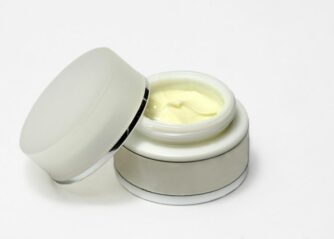Serum vs plasma: En grundlig jämförelse

Introduction:
Serum and plasma are two crucial components of our blood. Understanding the differences between these two substances can be valuable in various fields, including medicine and food science. In this article, we will provide an in-depth overview of serum vs plasma, exploring their definitions, types, popularity, and quantitative measurements. Additionally, we will discuss the disparities between serum and plasma and delve into their historical advantages and disadvantages. Whether you’re a medical professional or a culinary enthusiast, this article will equip you with the knowledge to understand the distinctions between serum and plasma.
What are serum and plasma?

To comprehend the disparities between serum and plasma, we must first define what they are. Both serum and plasma are components of blood, but they differ in composition. Plasma is the liquid portion of blood that remains after the removal of blood cells and platelets. It comprises approximately 55% of the total blood volume and contains various proteins, electrolytes, hormones, and waste products. On the other hand, serum is the fluid that remains after coagulation, similar to the plasma but without the proteins involved in clotting. This means that serum lacks factors necessary for blood clot formation.
Types and popularity
Within the realm of blood components, different types of plasma and serum exist. Fresh frozen plasma (FFP) is a type of plasma that undergoes a freezing process to preserve its coagulation factors. It is often used in medical emergencies, surgeries, or for patients with coagulation disorders. Furthermore, there is also single-donor plasma, which refers to plasma obtained from a single individual rather than pooled from multiple donors. Single-donor plasma is considered to have lower risks of transmitting infections and is often preferred in certain medical procedures.
In terms of serum, there are no distinct types as it is generally obtained by allowing blood to clot and removing the coagulated material. However, serum from different species, such as bovines or humans, may vary in composition and potential applications. The popularity of serum and plasma varies depending on the intended use. In medicine, plasma is highly sought-after for its clotting factors, while serum is valued for its absence of those factors in certain diagnostic tests.
Quantitative measurements
When it comes to quantitative measurements, both serum and plasma can provide valuable insights into an individual’s health. Plasma measurements often include assessing coagulation factors, glucose levels, electrolyte concentrations, and markers of diseases such as liver or kidney functioning. On the other hand, serum measurements focus more on evaluating specific protein levels or autoimmune markers that could indicate diseases like rheumatoid arthritis or lupus.
These measurements are typically performed using specialized laboratory equipment and require the separation of plasma or serum from blood cells. Additionally, specific tests and assays are employed to measure the concentrations of various substances accurately. These quantitative measurements aid medical professionals in diagnosing and monitoring diseases, allowing for timely interventions and treatments.
Differences between serum and plasma
Despite their similarities, serum and plasma have notable differences. One primary distinction is the presence of clotting factors in plasma, which are absent in serum. This difference makes plasma ideal for medical conditions necessitating clot formation or when coagulation factors need to be replenished. In contrast, serum is preferable in tests where the absence of interference from clotting factors is crucial. Moreover, the process of clotting and coagulation also differentiates serum and plasma, leading to variations in their composition and potential applications.
Another vital distinction lies in the color and appearance of serum and plasma. Plasma is typically yellowish in color, while serum appears as a pale or straw-colored fluid. This discrepancy in color is attributed to the presence or absence of clotting factors and other proteins involved in the coagulation process.
Historical advantages and disadvantages
Throughout history, both serum and plasma have played significant roles in medical advancements and research. In the early 20th century, the use of plasma transfusions helped save lives in cases of hemorrhage and shock. This led to further exploration and understanding of its potential applications in various medical conditions.
On the other hand, serum has been historically utilized in diagnosing and monitoring diseases. Serological tests, which examine specific antibodies or antigens present in the serum, have been instrumental in identifying infectious diseases like hepatitis or HIV. However, one potential disadvantage of using serum in tests is the possibility of interference from the absence or presence of certain proteins. This interference can affect the accuracy of diagnostic results, requiring careful consideration during testing.
Conclusion:
Understanding the differences between serum and plasma is vital, whether in a medical or culinary context. By delving into their definitions, types, popularity, quantitative measurements, disparities, and historical advantages and disadvantages, we have provided a comprehensive overview of these two blood components. As medical advancements continue and our knowledge grows, serum and plasma will remain essential tools in diagnostics, treatments, and research. Next time you encounter these terms in a medical report or a culinary context, you’ll have a deeper understanding of their significance.
















































